
What if I told you there are places on this planet that look like they shouldn’t exist? Lands so strange, so spellbinding, they blur the line between science and magic.
These aren’t scenes from a dream or a movie set — they’re real. And they’re waiting. From glowing landscapes that burn without end to rainbow-colored earth that feel painted by the gods, this list isn’t just about travel — it’s about wonder.
Buckle up, because once you see these surreal masterpieces of nature, you’ll question everything you thought you knew about the world beneath your feet. Ready to feel amazed?
1. Salar de Uyuni, Bolivia

The World’s Largest Mirror
Standing on Salar de Uyuni feels like walking across the sky. Stretching over 4,000 square miles, this salt flat in southwestern Bolivia becomes a surreal, glistening mirror after rainfall — so perfect, so seamless, it tricks your brain. Clouds float beneath your feet. The horizon disappears. You feel weightless like you’re drifting through some alternate realm. It’s the kind of place where photos don’t just go viral — they seem unreal.
But beyond its Instagram fame, Salar de Uyuni tells a geological story. Millions of years ago, this place was a prehistoric lake. Over time, the water evaporated, leaving behind thick crusts of salt and other minerals. It’s not just one of Earth’s most beautiful accidents — it’s also rich in lithium, making it a key player in powering the tech of tomorrow.
Personally, the first time I visited, I remember crouching down to touch the salt, convinced it was just a dusting of snow. But nope — salt as far as the eye could see. It crunches under your boots like frost. And when the sunset hits that reflective water? It’s a front-row seat to a dream.
Travel Tips & Quick Facts:
- Best Time to Visit: January to March (wet season for mirror effect); June to October for dry, hexagon-tile effect
- Getting There: Fly into Uyuni or La Paz; then take a 4×4 tour
- Don’t Miss: Incahuasi Island – a cactus-covered oasis in the middle of the flats
- Pro Tip: Bring sunglasses – the sun reflecting off that white salt is blinding
2. Zhangye Danxia Landform, China

A Natural Rainbow Painted on Stone
Ever seen a mountain striped in red, orange, yellow, and purple — like some divine tie-dye experiment? That’s the Zhangye Danxia Landform in Gansu Province, China. These vivid, layered rock formations look like they’ve been Photoshopped… but they’re completely real. Formed by millions of years of sandstone erosion and tectonic plate movement, the result is a painter’s palette of Earth tones stacked up in waves.
The colors come alive, especially during sunrise and sunset. As the light shifts, so does the intensity of the hues — it’s like watching the planet breathe. Some call it the “Rainbow Mountains,” which is spot-on. But standing there, wind brushing past, and seeing that technicolor landscape unfold in all directions? That’s something no picture captures fully.
Locals will tell you there’s a kind of spiritual energy to it, and I’d believe it. I watched an old woman sit cross-legged facing the hills for an hour in silence. She didn’t move. I asked her guide why — he just smiled and said, “She does that every year.” That stuck with me.
Travel Tips & Quick Facts:
- Best Time to Visit: June to September for clear skies and color contrasts
- Closest City: Zhangye (daily flights or train from major Chinese cities)
- Don’t Miss: Binggou Danxia — lesser known but more dramatic rock formations
- Pro Tip: Bring a wide-angle lens — panoramas here are next-level
3. Fly Geyser, Nevada, USA

America’s Alien Hot Spring
It’s the kind of thing you’d expect on Mars. Or maybe in a sci-fi movie. But it’s real, and it’s sitting on a patch of private land in the Nevada desert. Fly Geyser is a technicolor geothermal oddity, with water constantly spraying from its cone-shaped structure. What makes it pop is the mineral-rich water that has built up layers of rainbow-colored terraces, all thanks to thermophilic algae.
The geyser wasn’t formed naturally — it was a happy accident. In 1964, a well was drilled in search of geothermal energy. They hit hot water, but it wasn’t hot enough for energy production. Over time, minerals began building the cone, growing taller, stranger, and more vibrant every year.
I saw it on a detour during a road trip to Burning Man — and wow. It looks like something born out of Salvador Dalí’s imagination. The reds, greens, yellows — they look painted on. The air around it smells faintly of sulfur, and you’ll hear a steady hiss as hot water jets into the air like a breathing dragon.
Travel Tips & Quick Facts:
- Best Time to Visit: Spring and fall for cooler, comfortable weather
- Access: Located on private land owned by the Burning Man Project; guided tours only (check Fly Ranch website)
- Don’t Miss: The sunrise tour — the mist glowing in golden light is unreal
- Pro Tip: Book tours well in advance – they’re small groups and fill up fast
4. Spotted Lake, British Columbia, Canada

Nature’s Polka-Dot Pond
You’ll drive past it and slam on the brakes — that’s how Spotted Lake catches people. In the summer, the water evaporates and leaves behind round mineral-rich pools that look like giant leopard spots splashed across the earth. It’s not manmade. It’s not art. It’s just science and salt doing their thing.
The “spots” form from the lake’s high concentration of magnesium sulfate, calcium, sodium, and other minerals, which crystallize as the water levels drop. Different minerals form different colors — green, yellow, blue — depending on their chemical makeup and sunlight. It honestly looks like the Earth has freckles.
For the Okanagan Syilx people, this lake has been sacred for generations. They used its mineral-rich mud for healing. There’s still an aura of reverence there. It’s quiet, humbling. I remember just standing and staring, wondering how many people had passed it without realizing what was right in front of them.
Travel Tips & Quick Facts:
- Best Time to Visit: July to August when the water recedes and spots are visible
- Location: Near Osoyoos, British Columbia, along Highway 3
- Respect the Land: It’s on Indigenous territory — you can view it from the road or designated areas only
- Pro Tip: Bring binoculars — you’ll want to zoom in on the crazy patterns
5. Lake Natron, Tanzania
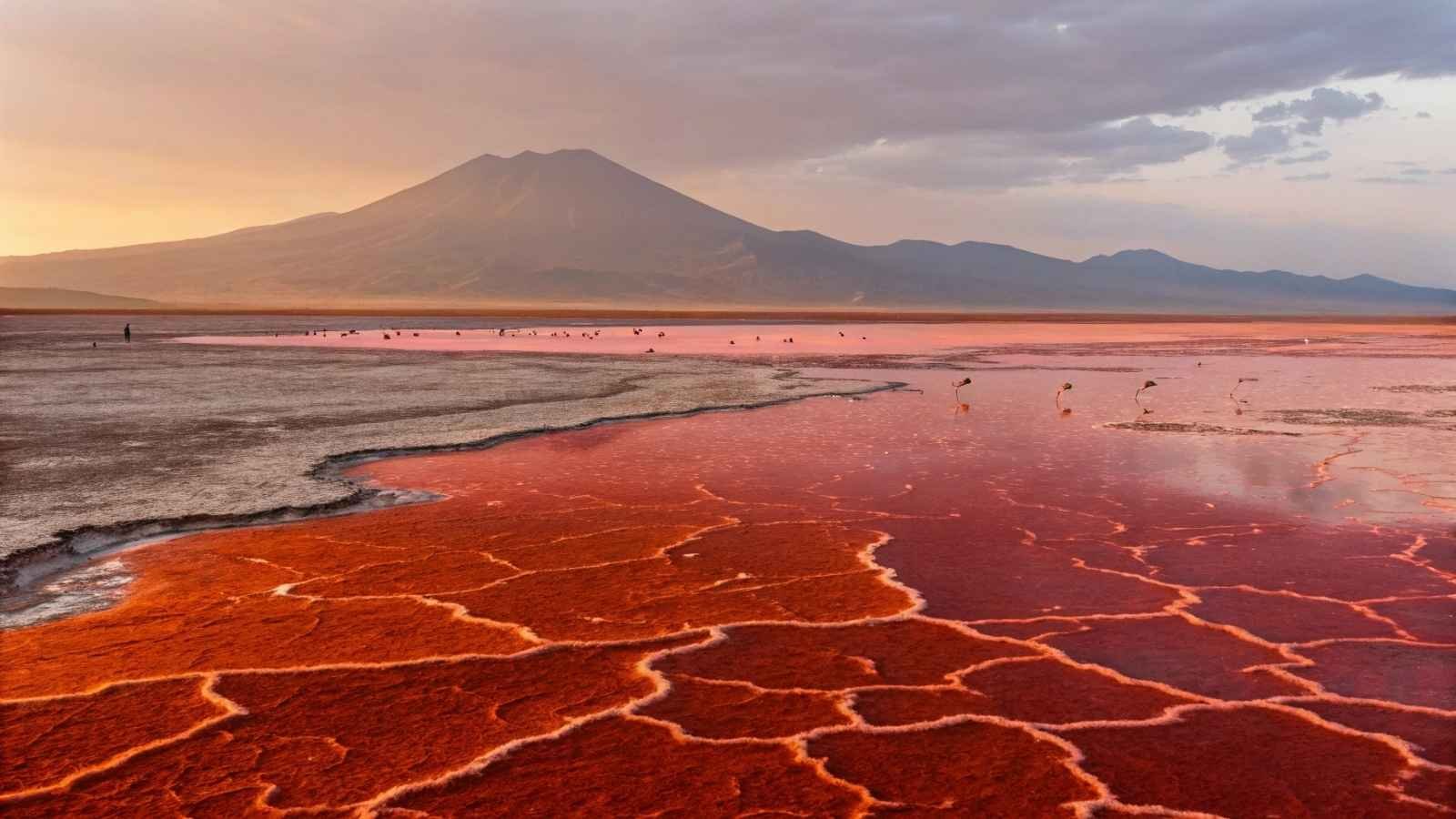
The Lake That Turns Animals to Stone
This lake doesn’t just look otherworldly — it behaves like it belongs on another planet. With its high alkalinity and temperatures reaching 120°F, Lake Natron is stunning and dangerous. Its blood-red waters come from the salt-loving microorganisms that thrive in extreme conditions. And here’s the kicker: animals that die in the lake become calcified, preserved like eerie statues.
Despite its intimidating nature, Lake Natron is essential for life — it’s the only breeding ground for millions of lesser flamingos. Somehow, they thrive where most life can’t. Their pink color against the red water makes for surreal, painterly scenes you’ll never forget.
Standing on the edge of this crimson lake, I felt like I was trespassing on another world. And yet, it pulses with life in the most unexpected ways. It’s haunting, beautiful, and unforgettable — all rolled into one.
Travel Tips & Quick Facts:
- Best Time to Visit: June to November (dry season, best for flamingo sightings)
- Access Point: Near Arusha, Tanzania — guided 4×4 tours recommended
- Don’t Miss: Close-up views of calcified bird sculptures along the lake’s edge
- Pro Tip: Bring a hat and sunscreen — the heat is no joke
6. Pamukkale Terraces, Turkey
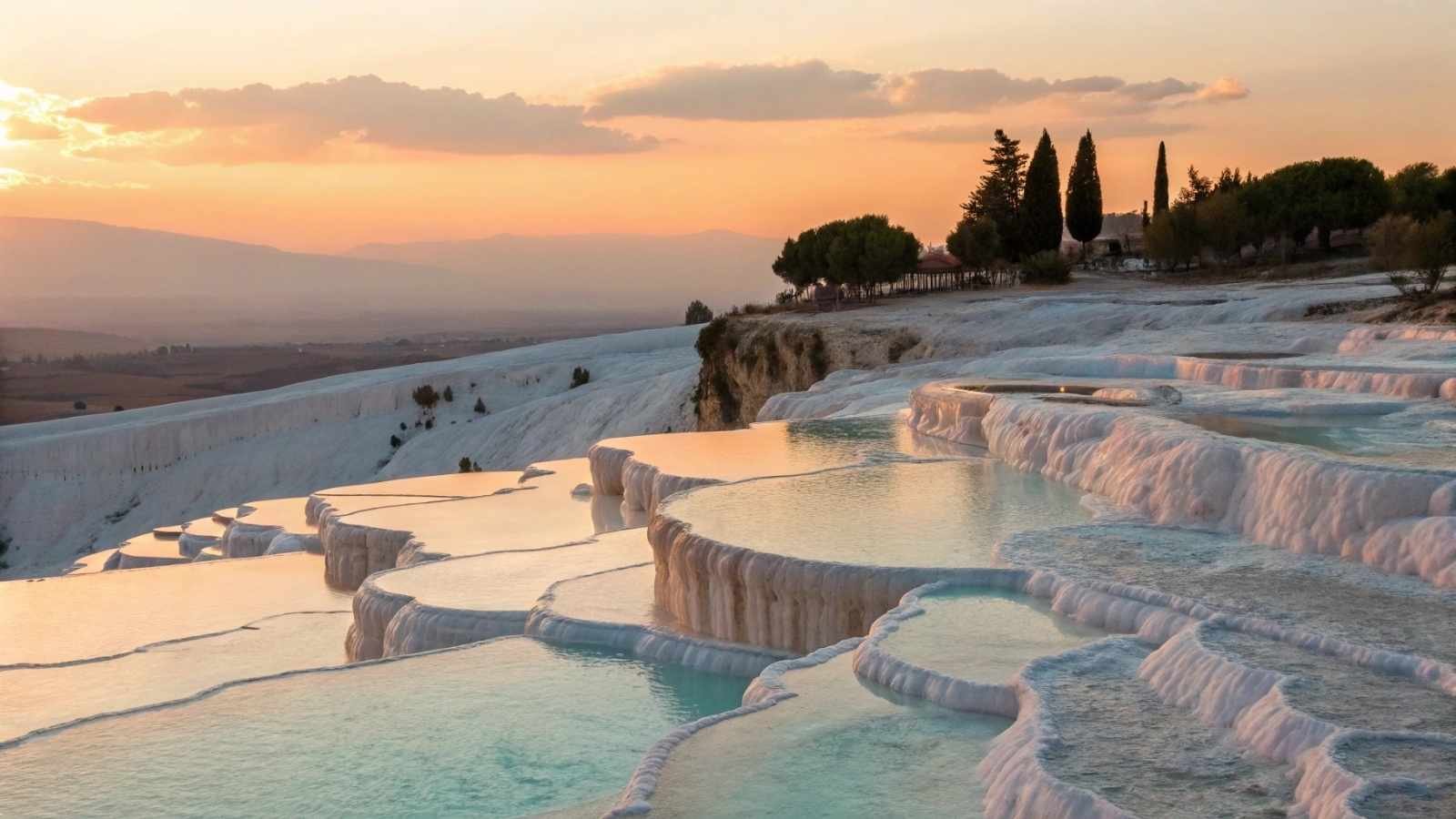
Cotton Castle in the Mountains
Pamukkale means “cotton castle” in Turkish, and once you lay eyes on it, the name makes perfect sense. Imagine a hillside covered in snow-white terraces, each filled with bright turquoise water. These terraces are made of travertine, a kind of limestone deposited by the area’s natural hot springs over thousands of years.
Walking barefoot across the terraces is one of those rare moments where nature and spa-day bliss collide. The water is warm and rich in minerals, long believed to have healing properties. Ancient Romans even built the nearby city of Hierapolis to enjoy these magical waters. Today, you can soak just like they did — with fewer togas, of course.
I visited Pamukkale on a whim, not expecting much. But stepping into that glowing water, with steam rising and sunset burning the sky orange, was like slipping into a dream. It’s calming, unreal, and photogenic from every angle.
Travel Tips & Quick Facts:
- Best Time to Visit: April to October (spring and fall are best for weather and smaller crowds)
- Closest City: Denizli (airport and train connections available)
- Don’t Miss: The ruins of Hierapolis — ancient pools, temples, and a stunning Roman theatre
- Pro Tip: Visit early morning or late afternoon to avoid the heat and get the best light for photos
7. Door to Hell, Turkmenistan

The Fiery Crater That Never Sleeps
In the heart of the Karakum Desert lies a giant crater that’s been burning for over 50 years. Locals call it the Door to Hell — and honestly, it earns the name. This 230-foot-wide pit of fire was accidentally created in 1971 when Soviet geologists were drilling for gas. The ground collapsed, releasing methane. So they lit it on fire to prevent poisoning — expecting it to burn out in a few days. Instead, it’s still going.
Standing on the edge of this fiery hole at night is intense. You feel the heat on your face. The flames dance and flicker below, like Earth is whispering some ancient fury. There’s no guardrail. No signs. Just you, a burning crater, and a moonlit desert.
I remember camping nearby — not something I’d recommend without an experienced guide. But wow, that orange glow in the distance was like watching a volcano exhale in slow motion. Unforgettable, eerie, and utterly wild.
Travel Tips & Quick Facts:
- Best Time to Visit: March to May or September to November (mild desert temperatures)
- Getting There: Reach Darvaza via a 4×4 tour from Ashgabat, the capital
- Camping: Possible with guided tours; bring food, water, and strong nerves
- Pro Tip: Go at night for the full fiery effect — it’s mesmerizing under the stars
8. Socotra Island, Yemen
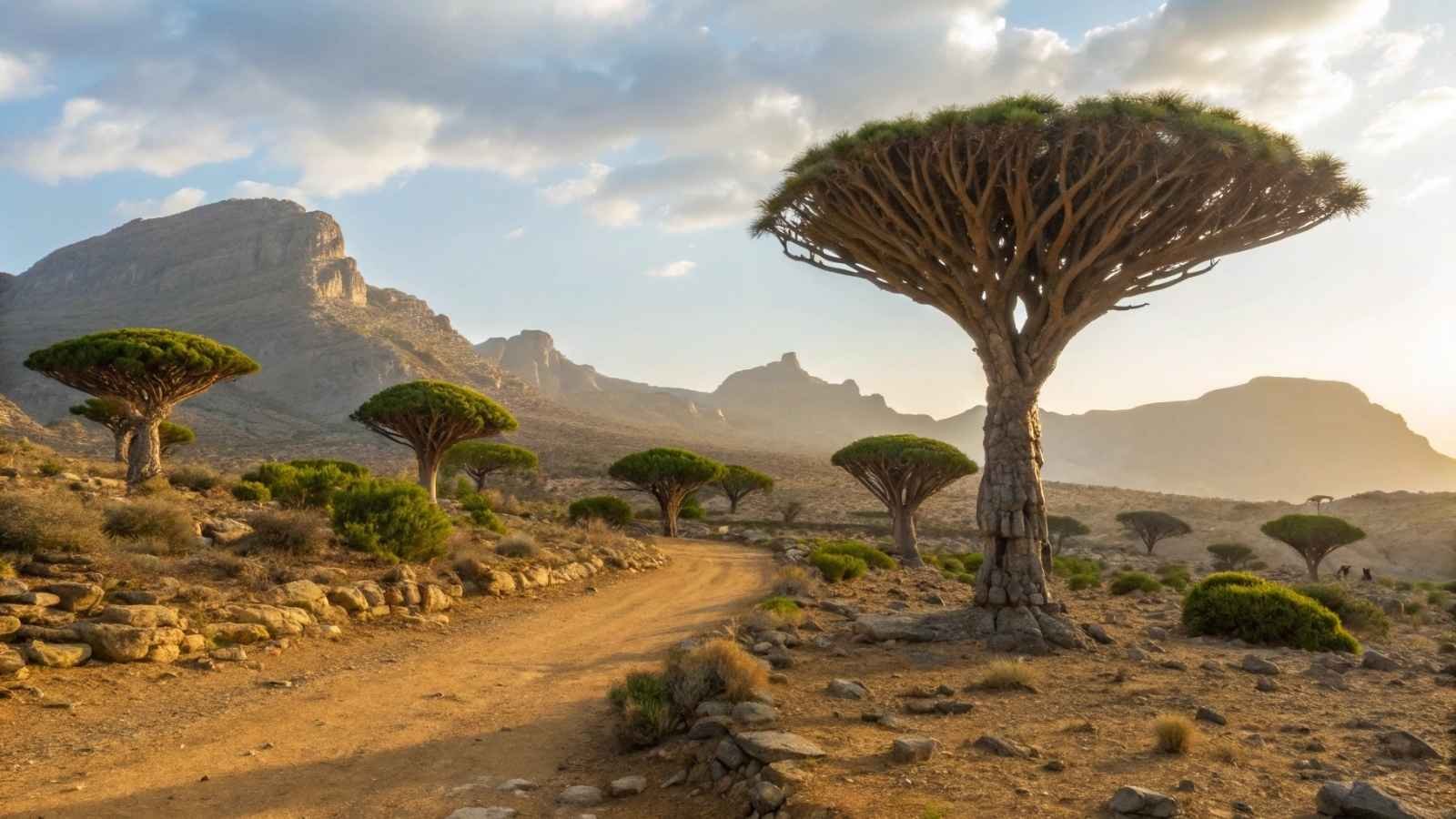
Earth’s Most Alien-Looking Island
Socotra is like the set of a science fiction film that nobody told you existed. Located off the coast of Yemen in the Arabian Sea, this remote island is home to plants and landscapes you won’t find anywhere else on Earth. Most famous are the Dragon’s Blood Trees — umbrella-shaped with red sap that looks like it bleeds when cut.
Because of its isolation, about 37% of Socotra’s plant life is endemic — meaning it exists nowhere else. The island is rugged, with jagged mountains, stark white dunes, and turquoise waters. It’s not just surreal — it’s a biological treasure chest.
When I first saw the photos, I thought someone had used an AI art filter. But nope. It’s real, wild, and raw. Few tourists make it here, so if you go, you’ll have vast, unspoiled beauty all to yourself. The silence alone is worth the trip.
Travel Tips & Quick Facts:
- Best Time to Visit: October to April (monsoon winds make summer travel nearly impossible)
- Getting There: Flights from Cairo or mainland Yemen (limited, plan ahead)
- Stay: Basic guesthouses and eco-lodges; it’s remote but worth the effort
- Pro Tip: Bring hiking shoes and a serious camera — every corner looks like another planet
9. The Wave, Arizona, USA
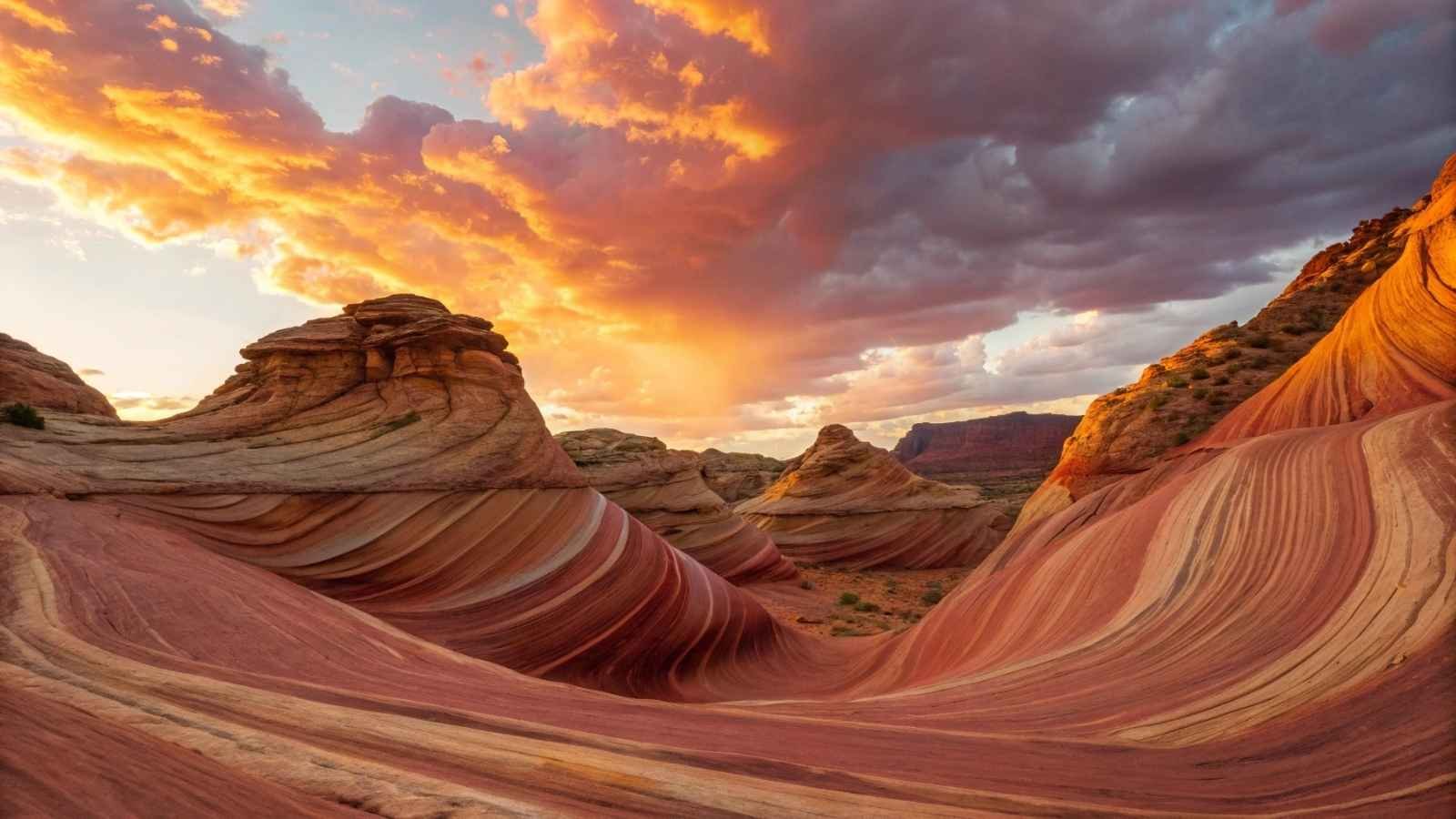
Nature’s Striped Sandstone Sculpture
Tucked within the Vermilion Cliffs Wilderness, The Wave is a striped, swirling sandstone formation that looks more like a lava lamp frozen in time. The red and orange bands twist and ripple like taffy. It’s compact, yet visually explosive — one of the most sought-after photo ops in the American Southwest.
Formed by millions of years of wind and water erosion, the texture is soft, almost velvety to the touch. But getting there isn’t easy — access is strictly limited to 64 people per day, and you need to win a lottery permit just to go. That said, if you’re lucky enough to snag a spot, prepare for one of the most visually stunning hikes of your life.
I won the permit on my second try. The hike was hot, dry, and unmarked — but rounding the final bend and seeing those waves of color unfold? Genuinely emotional. It’s not a landscape you just visit — it’s one you feel in your chest.
Travel Tips & Quick Facts:
- Best Time to Visit: March to May, September to November (cooler hiking temps)
- Permit: Required via online or walk-in lottery system
- Trail Info: 6-mile round-trip hike with little shade — be well-prepared
- Pro Tip: Start your hike at sunrise — cooler temps and better light for photos
10. Emerald Ice on Lake Baikal, Russia
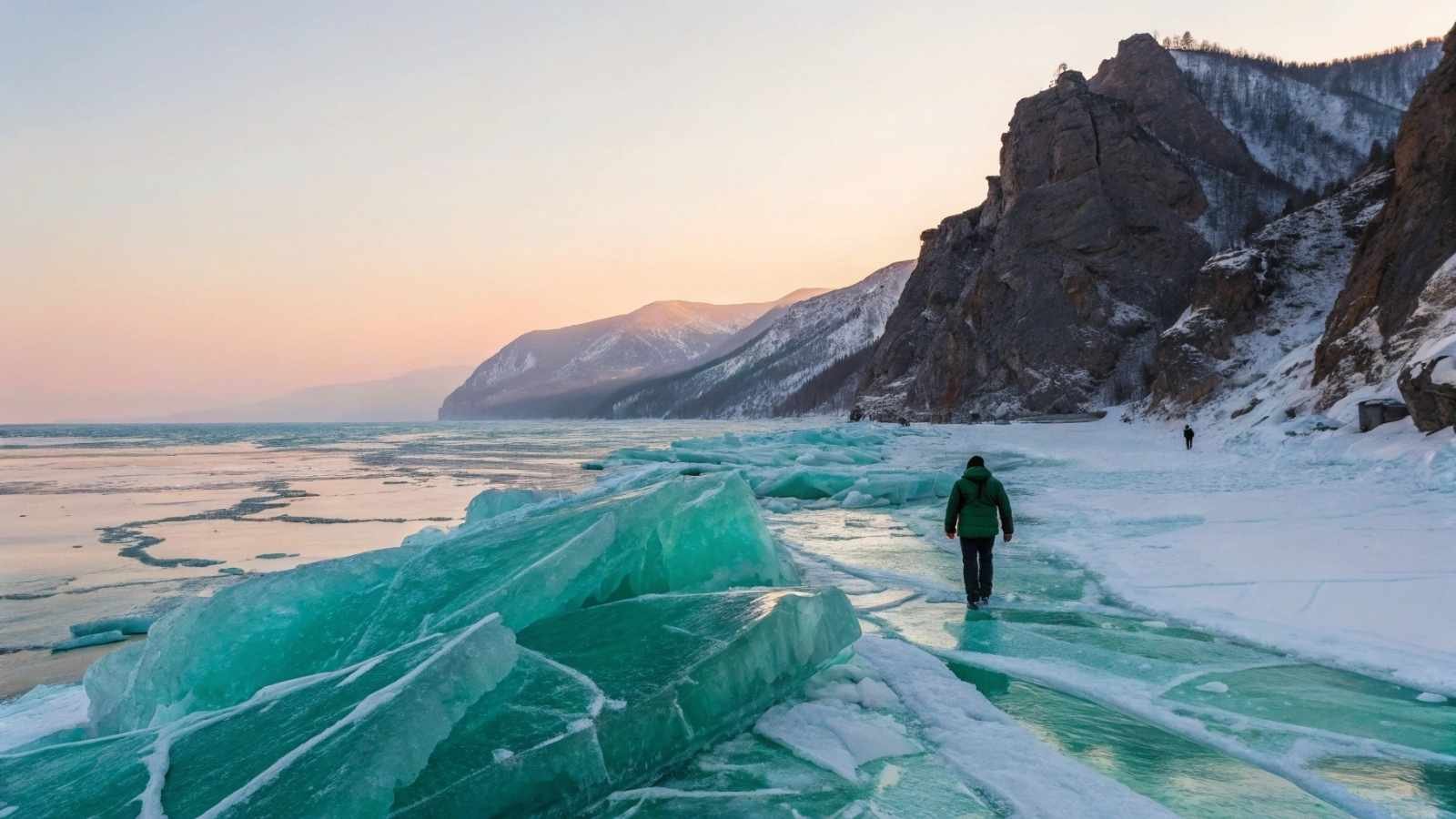
Frozen Glass and Shattered Beauty
Lake Baikal is already the deepest and oldest lake in the world, but in winter, it transforms into something surreal. The surface freezes into crystal-clear emerald ice, thick enough to walk, skate, or even drive across. Large shards jut out like glass daggers, catching the sun in wild green-blue hues.
When you walk on it, you can see to the bottom — fish, bubbles, cracks — it’s like floating over an aquarium. The ice moans and groans underfoot, but don’t worry — it’s incredibly thick and strong. Still, the sounds are… haunting. Like Earth is groaning in her sleep.
I remember laying on the ice, staring into its depths while listening to the creaks echo through the valley. It felt sacred. Like time had paused. It’s one of those places that humbles you without trying.
Travel Tips & Quick Facts:
- Best Time to Visit: February to mid-March (when ice is thick and clearest)
- Getting There: Fly to Irkutsk, then travel to Olkhon Island or Listvyanka
- Activities: Ice trekking, hovercraft rides, frozen caves
- Pro Tip: Wear layers — it’s brutally cold but insanely beautiful
11. Giant’s Causeway, Northern Ireland

Where Myth Meets Geology
At first glance, it looks like someone laid out perfectly shaped hexagonal stepping stones, stacked tightly along the ocean’s edge. But the Giant’s Causeway isn’t manmade — it’s the result of volcanic activity over 50 million years ago. As lava cooled and cracked, it formed more than 40,000 basalt columns, all interlocked like a surreal geometric puzzle.
Local legend, of course, has a more magical explanation. They say the Irish giant Finn McCool built the causeway to cross the sea and challenge a rival in Scotland. And honestly? It feels like the kind of place where giants might’ve walked. The wind whips. Waves crash. And those stones stretch out into the sea like the remnants of some ancient road to nowhere.
It’s the contrast that gets you — dark rock against a wild, green coast. Peace and power in the same place. I sat on one of those stones, boots wet from sea spray, and watched a rainbow arc into the ocean. No postcard could do it justice.
Travel Tips & Quick Facts:
- Best Time to Visit: May to September for pleasant weather and vivid coastal views
- Getting There: About 1.5 hours from Belfast by car; accessible via tour or public transport
- Don’t Miss: The nearby Carrick-a-Rede Rope Bridge — nerve-wracking but worth it
- Pro Tip: Head there early or late to avoid crowds and catch golden-hour lighting
12. Vinicunca (Rainbow Mountain), Peru

A High-Altitude Kaleidoscope
Rising nearly 17,000 feet above sea level, Vinicunca — better known as Rainbow Mountain — is a stripe of color splashed across the Andes. The bands of red, turquoise, gold, lavender, and green are natural, created by sedimentary minerals compressed and exposed over millennia.
But make no mistake — getting there is a challenge. It requires a strenuous hike at a high altitude, and the air gets thin fast. Still, those who make it are rewarded with a view that feels otherworldly and earned. There’s something primal about standing at the summit, the wind tearing through your coat, colors glowing beneath a sky that looks almost too blue.
I struggled on the final incline — lungs burning, legs jelly — but when I reached the top, I laughed. Not because I was relieved, but because I couldn’t believe a place like that existed on Earth. It was like the Andes had turned into a painting and let us in for the day.
Travel Tips & Quick Facts:
- Best Time to Visit: May to September (dry season with clearer skies)
- Access Point: Usually via Cusco; expect a full-day tour including hiking
- Altitude Caution: Acclimate in Cusco for 2–3 days before attempting
- Pro Tip: Bring coca tea or leaves — locals swear by them for altitude sickness
13. Red Beach, Panjin, China

A Crimson Sea of Reeds
Forget golden sand or turquoise waters — Red Beach is something else entirely. Located in northeastern China, this wetland area glows deep red every autumn, thanks to a unique type of seaweed called Suaeda salsa. The result? A fiery, surreal expanse that looks more like Mars than Earth.
What makes this even more impressive is how the vivid red stretches for miles, intersected by winding boardwalks. Birds fly overhead. The air smells faintly of salt and wild reeds. It’s peaceful, but it hits you visually like a punch of color — totally unexpected and mesmerizing.
I walked that boardwalk in September, camera in hand, heart thumping. It felt like I had stepped inside a painting, and I didn’t want to leave. And honestly? I still dream about it sometimes — that red, that silence, that sense of being somewhere sacred.
Travel Tips & Quick Facts:
- Best Time to Visit: Mid-September to early October when the red is most vibrant
- Location: Panjin City, Liaoning Province, China
- Wildlife Watch: The area is home to over 260 bird species — bring binoculars
- Pro Tip: Visit during sunrise or sunset — the red becomes even more intense
14. Dallol Volcano, Ethiopia

Boiling Earth, Toxic Colors, and a Place Unlike Any Other
Imagine standing in the middle of a landscape so bright, so blistering, and so bizarre, it feels like you’re on Jupiter. Welcome to Dallol, a volcanic crater located in Ethiopia’s Danakil Depression — one of the hottest and most hostile environments on Earth. Acidic pools bubble. Gases hiss. The ground glows neon green, yellow, and orange from layers of salt, sulfur, and minerals reacting to the volcanic heat below.
You don’t walk here — you tread carefully. It’s dangerous, yes, but also jaw-droppingly beautiful in a way that’s hard to describe. The air smells of sulfur. The ground crunches like burnt sugar. And the colors? They shift with every step.
This isn’t a touristy place. It’s extreme. And yet, for those willing to brave the heat and isolation, it offers a kind of raw, geological honesty that’s hard to find anywhere else. It’s like staring at Earth’s own open wound — beautiful, surreal, and unforgettable.
Travel Tips & Quick Facts:
- Best Time to Visit: November to February (coolest window, but still intensely hot)
- Getting There: From Mekele, Ethiopia — only accessible via guided tours with 4×4 vehicles
- Caution: Toxic gases and unstable ground — safety gear is sometimes required
- Pro Tip: Hydrate obsessively and protect your camera from the acidic air






